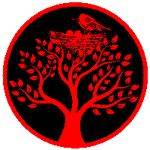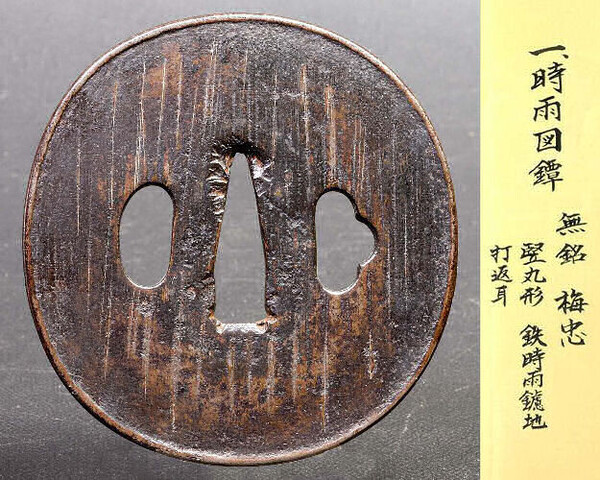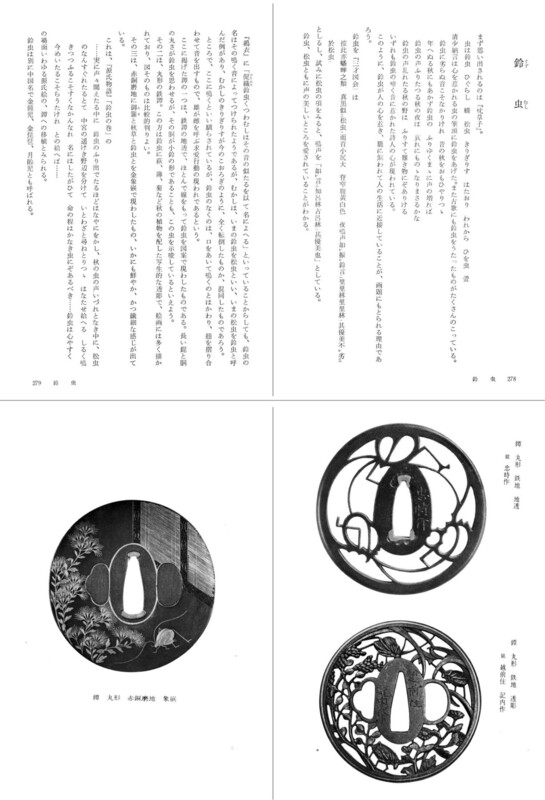-
Posts
797 -
Joined
-
Last visited
-
Days Won
4
Content Type
Profiles
Forums
Events
Store
Downloads
Gallery
Everything posted by MauroP
-
Hi Grev, indeed it looks like a Noh or Kyogen mask (小猿 - Kozaru - Child Monkey) rather a true monkey. https://nohmask.jp/mask/k_kozaru.html
-
Karigane (wild geese) have many different representations. Here below some examples: Anyway, I think I have in my collection a piece with stylized bats (kōmori zu - 蝙蝠図):
-
Hi, I think Tomohisa (智久) and Kōfu-jū Toshimasa (江府住 利政)
-
雲龍図鐔 無銘 水戸 竪丸形 真鍮石目地 鋤出彫 象嵌色絵 両櫃孔 (笄櫃埋 ) 打返耳
-
Nice tsuba, but in my opinion not as good as average Mino works. More probably Kyō-kanagushi.
-
Bruno, Japanese tsuba artisans surely mastered their skills at an unbelievable level, so no surprise they were able to reproduce in small series wonderful pieces. So I've paid attention to make confrontation just between yose-tagane and sekigane that are supposed to be adaptations to a specific sword tang. My conclusions are that the tsuba reproduced in the booklet and the one in the Naunton collection catalog are the very same tsuba. Well, alternative explanation is far less favourable...
-
Hi Dick, the bird is a hawk (taka) and the vegetable an eggplant (nasubi). The theme is known as hatsuyume (初夢), i.e. the first dream one has in the new year. It was considered to be particularly good luck to dream of Mount Fuji, a hawk and an eggplant.
-
Just a little of selfpromotion about themes in tsuba 😉 https://www.dropbox.com/s/frt7dkpoj6b5x8y/FHJ.pdf?dl=0 https://www.dropbox.com/s/7cgrf6pfluf15xw/Tsuba%20-%20Kodogu%20Gadai%20Jiten.pdf?dl=0
- 1 reply
-
- 4
-

-
The 2nd column: 鉄地 変形 鋤出彫 - tetsu-ji kawari-gata sukidashi-bori Ciao Luca, nice tsuba, I also tryed to get it on Yahoo Japan. PS - I'm curious about the possible meaning of Japanese fiber banana in tōsōgu. Any idea?
-
Hi Greg, actually most of tsuba you have posted here are not true mu-hitsu-ana but are usually referred as kata-hitsu-ana-shitate (i.e. with a single space for implement cut-out from the sukashi design).
-

Help with Reading/Guessing Inscription on Tsuba
MauroP replied to Krystian's topic in Translation Assistance
It looks like that the subject of the tsuba is a collection of ornamental roof tile, so the kanji could be searched among the decorations of a temple roof. -
鐔 無銘 奈良 - tsuba mumei Nara 寿老人図 素銅槌目地 長丸形 薄肉彫 毛彫 片切彫 - Jurōjin zu suaka-tsuchime-ji nagamaru-gata usunikubori kebori katakiribori 金・赤銅象嵌色絵 耳・ 打返し - kin, shikudō zōgan iroe mimi, uchikaeshi
-
Surface finish with vertical file marks is usually referred as shino-yasuri (篠鑢), tate-yasuri (竪鑢) or shigure-yasuri (時雨鑢). Here two papered examples: ... and two from my collection: Never found sendai-yasuri.
-
-
The themes suzumushi, akikusa, Musashino and nozarashi sometimes overlap in some instances. Anyway each theme has its own origin in Japanese literature. According to "Tsuba - Kodōgu Gadai Jiten" (vol. 1, p. 278) the suzumushi-zu refers to "The Pillow Book" (Makura no Sōshi - 枕草子) by Sei Shōnagon, a collection of writings from Heian period. Here below the relevant entry from "Tsuba - Kodōgu Gadai Jiten" :
-
Hi Stephen, actually it's a toad. The theme is referred as Jiraiya (自来也 or 児雷也). It'a about the hero of the the folktale reported in Jiraiya Gōketsu Monogatari, who was able to morph into a gigantic toad. See Numata Kenji, Tsuba - Kodōgu Gadai Jiten, vol. 1 p. 120.
-
More like chōji (cloves), which is coherent with plants.
-
Of course the Daruma tsuba is a casted piece, as most if not all bronze tsuba, and it's quite modern in age. Does it mean a "fake" tsuba?
-
mu-hitsu-ana tsuba in my collection: 1 kawari-mokkō-gata signed sandai-me Myōchin saku 2 Daruma zu tsuba signed Enjuken Hirotoshi sei, possibly Meji/Shōwa jidai 3 dragon in katakiribori, signed Jakushi (?) 4 karakusa-mon sukashi tsuba, with NBTHK attribution to Myōchin 5 kasumi zu (fog), Heianjō-zōgan 6 karakusa zu, Heianjō-zōgan
-
Not very much informative that certificate... At least no controversial statement there. 😁
-
I can read just Fujiwara Masanori. Maybe the same as http://new.uniquejapan.com/yamato-daijo-fujiwara-masanori-katana-yamashiro-sanjo-school-1596-1624/?
-
well, I suppose that no inlay could sometimes be better than some sparse fragment
-
Classic ranma-sukashi (欄間透) of Yoshirō school. Unfortunately all hira-zōgan lost. The pattern is usually referred as mogusa (藻草 - water plants).
-
江府住 井戸利壽 - Kōfu jū Ito Toshinaga 利寿 and 利壽 are variant ways for Toshinaga











